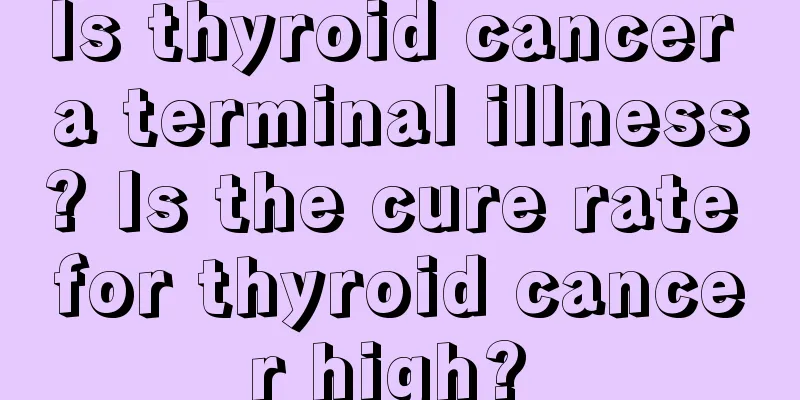Can renal hamartoma be dissolved by taking Chinese medicine?

|
Renal hamartoma is a benign tumor that usually does not need to be "dissolved" by Chinese medicine. Its treatment mainly depends on the size of the tumor, symptoms, and whether it affects kidney function. For small, asymptomatic renal hamartomas, regular observation is usually recommended; for larger or symptomatic tumors, surgical intervention may be required. Chinese medicine has a limited role in the treatment of renal hamartomas, and is more of an auxiliary conditioning of the body rather than directly eliminating the tumor. 1. Causes and characteristics of renal hamartoma Renal hamartoma is a benign tumor composed of blood vessels, smooth muscle and adipose tissue, which is common in the kidney. Its specific cause is still unclear, and it may be related to genetic factors, gene mutations or developmental abnormalities. Most renal hamartomas have no obvious symptoms and are often found during physical examinations. In rare cases, the enlargement of the tumor may cause low back pain, hematuria or abdominal masses, and even compress surrounding organs. 2. Limitations of Chinese medicine in treating renal hamartoma The role of Chinese medicine in the treatment of renal hamartoma is mainly to regulate the body and enhance immunity, rather than directly eliminate the tumor. Some Chinese medicines such as astragalus, ganoderma lucidum, and wolfberry are believed to have the effect of enhancing immunity, but there is a lack of scientific evidence to prove that they can shrink or eliminate renal hamartoma. Chinese medicine treatment should be carried out under the guidance of a professional Chinese medicine practitioner to avoid blind medication. 3. Treatment of renal hamartoma For small, asymptomatic renal hamartomas, regular follow-up with imaging tests to monitor tumor changes is usually recommended. For larger or symptomatic tumors, surgery may be required. Common surgical methods include partial nephrectomy, renal artery embolization, and radiofrequency ablation. Partial nephrectomy is suitable for patients with large tumors but normal kidney function; renal artery embolization shrinks the tumor by blocking its blood supply; radiofrequency ablation uses high temperatures to destroy tumor tissue. 4. Lifestyle adjustment and prevention Patients with renal hamartoma should maintain a healthy lifestyle, such as a balanced diet, adequate exercise, and avoid excessive fatigue. They can eat more foods rich in vitamins and antioxidants, such as fresh vegetables, fruits, and whole grains. Regular physical examinations can help detect tumor changes early and take timely intervention measures. The treatment of renal hamartoma should be personalized according to the specific situation. Chinese medicine can be used as an auxiliary conditioning method, but it cannot replace regular medical treatment. Patients should choose a treatment method that suits them under the guidance of a doctor and follow up regularly to monitor tumor changes. Maintaining a healthy lifestyle and a positive attitude are essential for disease management. |
<<: What are the symptoms and signs of bone cancer
>>: Does renal hamartoma have any harm to the body?
Recommend
How to make an wormwood pillow?
In life, mugwort has many uses. In the future, yo...
How to cook macaroni in syrup
People who cook macaroni for the first time may n...
What is the reason for a lot of dirt in the nose?
In recent years, our air quality has been getting...
Is hydrohepatic effusion contagious?
Generally, diseases related to the liver are cont...
How can we have quality sleep?
With the development of society, work pressure is...
Principles of chemotherapy for pulmonary tuberculosis
When treating many diseases, we want to use a tre...
How long does it take for a fibroid to be able to exercise
We have all seen patients with fibroids. After th...
Daily care methods for influenza
Every time the season changes, the flu will attac...
How should patients with ovarian tumors eat properly?
Ovarian tumors are a gynecological malignancy wit...
What's wrong with diarrhea without abdominal pain
Diarrhea, which is commonly known as loose stools...
Experts analyze the specific causes of lung cancer for everyone
The lungs are an important organ of the human bod...
How does traditional Chinese medicine treat melanoma?
As one of the four great quintessences of Chinese...
How many meters of blood vessels does a person have?
We all know that there are many blood vessels in ...
Is it useful to apply white vinegar to flat warts? What are the consequences?
Flat warts usually occur in young people, mostly ...
What to eat to detoxify the body
If you want to detoxify your body, you can drink ...









